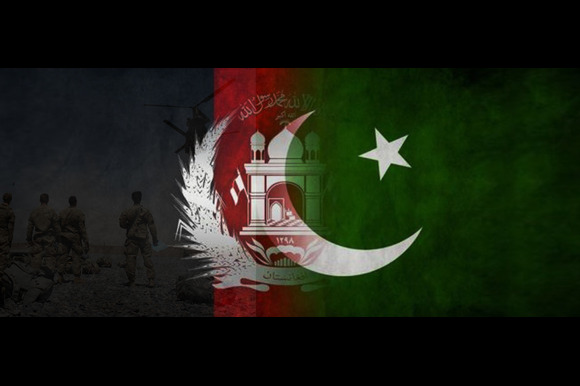
ipri pak
Pakistan and Afghanistan’s Taliban government announced on Wednesday that they have reached a temporary ceasefire agreement following days of intense cross-border clashes and reported Pakistani air strikes in Kabul and Kandahar.
Officials from both sides claimed that the other party had requested the 48-hour truce, which Pakistan’s foreign office said came into effect at 13:00 GMT on Wednesday. The agreement aims to ease tensions that have rapidly escalated along the border after a week of deadly confrontations.
Civilian Deaths and Conflicting Casualty Claims
According to a Taliban government spokesman, 12 civilians were killed and more than 100 others wounded as a result of Pakistani shelling across the frontier. However, Pakistan’s military reported that its forces had killed between 15 and 20 Afghan Taliban fighters in the Spin Boldak border district, while injuring several others.
The Taliban, meanwhile, claimed that numerous Pakistani soldiers had lost their lives in the fighting. Both governments have presented conflicting accounts of the clashes, and the BBC has been unable to independently verify any of the reported death tolls or injuries.
Explosions in Kabul and Kandahar Escalate Crisis
The already volatile situation worsened later in the day when explosions were reported in Kabul and Kandahar, sparking widespread alarm. Pakistani state media outlets claimed the blasts were air strikes conducted by Pakistan’s armed forces targeting militant positions within Afghan territory.
However, there has been no official confirmation from Pakistan’s military regarding the air operations. The Taliban government also declined to directly link the explosions to the ongoing clashes, stating instead that an oil tanker and generator had exploded, without elaborating further.
A Taliban spokesman said Afghan forces had been instructed to honor the ceasefire “as long as no one commits aggression.” Despite this, both sides continued to engage in a propaganda war online, sharing videos and statements to demonstrate their military strength and portray themselves as victims of the conflict.
Clashes Follow Week of Escalating Hostilities
The latest outbreak of violence follows a weekend of severe border clashes. The Taliban claimed at that time to have killed 58 Pakistani soldiers, while Islamabad alleged it had eliminated 200 Taliban and affiliated militants. Both figures remain unverified, though they reflect the scale of hostilities between the two sides.
Wednesday’s fighting shattered several days of fragile calm, reigniting tensions that had briefly subsided after earlier skirmishes.
Eyewitness Accounts from Spin Boldak
Residents in the Afghan border town of Spin Boldak, located near the Chaman crossing, described heavy fighting in the early morning hours. One local source told the BBC that clashes began at around 04:00 local time (23:30 GMT on Tuesday) and continued for nearly five hours.
“I saw drones and jets flying above us, and some of our relatives have been wounded,” said another local resident who lives roughly a kilometer from the border.
A doctor at a nearby hospital in Spin Boldak said he counted seven bodies and 36 injured, including men, women, and children. He described the situation as “tense”, adding that more casualties were continuing to arrive at medical facilities.
Displacement and Destruction Reported
A Taliban official in Spin Boldak told the BBC that hundreds of families had been displaced overnight due to intense fighting and aerial bombardments. He claimed that Taliban forces were on high alert after several of their posts were allegedly hit by Pakistani jets, and asserted that Taliban fighters had recovered the bodies of two Pakistani soldiers.
Unverified videos circulating on social media purportedly show burned-out military posts, night-vision footage of gunfire, and alleged victims of the clashes. None of these videos have been independently authenticated.
Additional Clashes in Pakistan’s Northwest
In a separate incident overnight, Pakistan’s military reported that 25 to 30 Taliban and Pakistani Taliban (TTP) fighters were “suspected” to have been killed in clashes along the country’s northwestern frontier.
These confrontations underscore the ongoing instability along the Durand Line, the disputed border separating Pakistan and Afghanistan, which has remained a flashpoint since the Taliban’s return to power in 2021.
International Reactions and Calls for Restraint
The renewed violence has prompted concern from global powers, including China and Russia, both of which have called for immediate de-escalation and dialogue.
U.S. President Donald Trump suggested that he was prepared to step in to help mediate peace between Islamabad and Kabul. Meanwhile, Richard Bennett, the UN Special Rapporteur on Human Rights in Afghanistan, said he was “deeply concerned” about reports of civilian casualties and mass displacement.
“I urge all parties to exercise maximum restraint, protect civilians, and abide by international law,” Bennett wrote on the social media platform X (formerly Twitter).
Root Causes of Tension
For years, Pakistan has accused the Afghan Taliban government of harboring Pakistan Taliban (TTP) militants, allowing them to use Afghan soil to launch cross-border attacks aimed at toppling Islamabad’s government and enforcing an extremist interpretation of Islamic rule.
The Taliban government in Kabul has consistently denied these allegations, insisting that it does not permit militant groups to operate within Afghanistan’s borders.
Analysts say that the ongoing clashes reflect deep-rooted mistrust and unresolved territorial issues, with the Durand Line continuing to be a source of dispute.
Fragile Ceasefire Amid Uncertain Future
While both Pakistan and the Taliban have agreed to a 48-hour ceasefire, fears remain that the truce could quickly collapse amid mutual suspicion and political pressure.
Observers warn that without a lasting diplomatic framework, border skirmishes could reignite, threatening to destabilize the region further. For civilians on both sides of the border, the hope for peace remains fragile — overshadowed by displacement, destruction, and the haunting echoes of recent violence.




